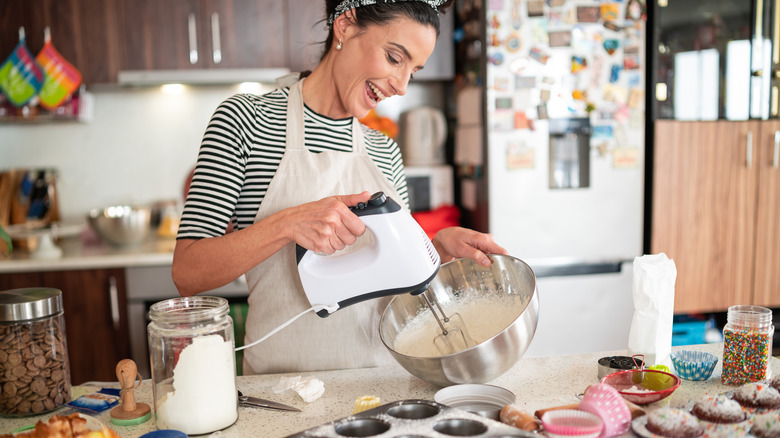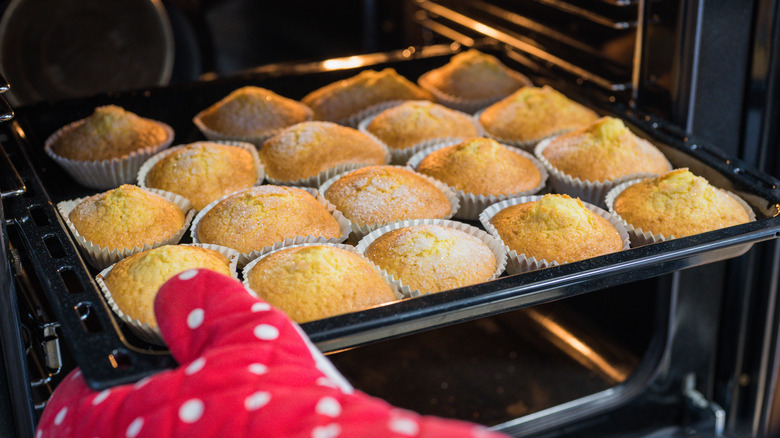The Difference Between Cupcakes And Muffins Is More Than Just Icing
All jokes about muffins just being breakfast cupcakes aside, there are some critical differences that actually make them lightyears apart. On an anecdotal level, cupcakes and muffins traditionally have notably different uses. A tower of cupcakes in lieu of a big cake at a wedding would not be unexpected. But baskets of muffins might read as quirky, even signaling some cute back story. Cupcakes are also more synonymous with carefully transported batches for elementary school birthdays. Muffins, on the other hand, somehow telegraph both Sunday mornings and grabbing something on the way to work.
Empirically, cupcakes and muffins will typically have similar, but different enough ingredients, preparation methods, and yes, even toppings, to keep them distinct. These discrepancies almost always lead to a sweeter cupcake, and a denser muffin. Each item's methodology is what keeps a cupcake, at its essence, a dessert, or special treat, and makes a muffin a breakfast, or a light snack.
Sugar content is a large divide between cupcakes and muffins. The recipe for these classic carrot cake cupcakes, for example, calls for three quarters of a cup of granulated sugar and three quarters of a cup of brown sugar for a total of one-and-a-half cups of sugar. That is not including the cup of powdered sugar required for a cream cheese frosting. This recipe for rhubarb and cardamom oat muffins, on the other hand, requires only three quarters of a cup of light brown sugar. A streusel that goes on top needs only an additional three tablespoons of light brown sugar.
Sweetness isn't the only divide between cupcakes and muffins
The carrot cake cupcake and rhubarb and cardamom oat muffin examples are more elaborate, ingredient-packed recipes than your entry level cupcakes and muffins. Still, plenty of simpler recipes for standard chocolate cupcakes and basic blueberry muffins will show similar sugar discrepancies. That extra sugar doesn't only make the cupcakes sweeter, it also affects their texture. Here, the sugar acts as a moisture-retaining agent, giving the cupcake a springy interior, where the lower-sugar muffin is more compact.
In either case, the order in which the batter is prepared is also important. Cupcake recipes will typically call first to cream the butter and sugar, then incorporate the eggs, and finally add remaining wet dry ingredients in shifts. This order helps give cupcakes their buoyant texture. Muffins combine dry ingredients in one bowl and the wet in another, before joining them together. Likewise, this order gives the muffins their relative firmness.
But about that icing: Most people would be as taken aback by cupcakes losing their buttercream crowns as they would by a rise in heavily frosted muffins. So, while food science can detail the composition of cupcakes and muffins, the customary toppings make each stand out in its own category.

